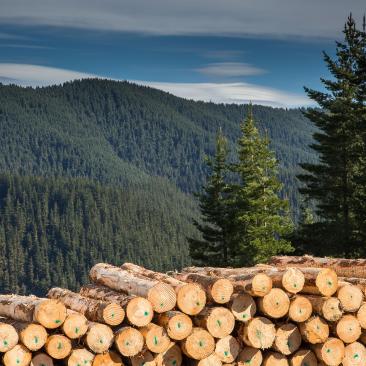
FSC in New Zealand
New Zealand is internationally recognised as a hotspot for biodiversity, with a high number of unique species due to its isolation. For example, of the 245 species of birds in New Zealand before human arrival, 71% were endemic. The country’s unique native forests support a vast array of plants and animals and are revered by the Māori for their beauty, spiritual presence, supply of food, medicines, and weaving and building materials. Rapid clearing of these native forests occurred in the 1800s to 1900s,. In response, plantations were introduced to reduce the pressure on native forests.
FSC has a proud history of almost 25 years in New Zealand, certifying plantation forests to ensure their environmental, economic, and social viability. During this time, FSC-certified forest managers have diligently implemented FSC’s rigorous standards and helped drive significant improvements across the board in the New Zealand forestry industry, including in stakeholder engagement and the identification and evaluation of environmental values.
The FSC National Forest Stewardship Standard of New Zealand
This standard sets out the required elements against which FSC accredited Certification Bodies shall evaluate plantation forest management practices within the given scope of this standard.
The FSC Principles and Criteria for Forest Stewardship provide an internationally recognized standard for responsible forest management. However, any international standard for forest management needs to be adapted at the regional or national level in order to reflect the diverse legal, social and geographical conditions of forests in different parts of the world. The FSC Principles and Criteria therefore require the addition of indicators that are adapted to regional or national conditions in order to be implemented at the forest management unit level. The FSC Principles and Criteria together with a set of such indicators accredited by FSC constitute an FSC National Forest Stewardship Standard.
This standard follows the requirements of FSC-STD-60-002 Structure and content of forest stewardship standards (November 2004) and FSC-GUI-60-004 (v1-0) EN FSC Forest Stewardship Standards: structure, content and suggested indicators to improve consistency and transparency in certification decisions between different certification bodies in the region/nation and in different parts of the world, and thereby to enhance the credibility of the FSC certification scheme as a whole.

Group and SLIMF Certification
FSC certificate holders can also join together to form a group certification scheme and share their efforts for forest management planning, harvesting, monitoring and marketing their products. Group certification makes it easier, particularly for smallholders, to become FSC certified, as it enables group members to share costs and workload for applying and maintaining an FSC certificate.
Small or low-intensity managed forests (SLIMF) are eligible for streamlined requirements and auditing procedures that reduce the costs and efforts of the certification.
Many countries have developed specific forest management requirements for SLIMF in their national standards, to facilitate the certification process for smallholders. Check your national standard, or talk to your national or regional office to find out if this is the case in your country.
Similarly, the auditing process can be relaxed for SLIMF operations.
The following relevant document can be downloaded from the document centre:
FSC-STD-01-003 V1-0 SLIMF Eligibility Criteria.
FSC-STD-30-005 FSC Standard for Group Entities in Forest Management Groups
FSC-STD-20-007 Forest Management Evaluations
Controlled Wood
Controlled wood is material from acceptable sources that can be mixed with FSC-certified material in products that carry the FSC Mix label. The controlled wood requirements identify five categories of unacceptable sources for wood, which is not allowed to be mixed with FSC-certified material. These are:
- Illegally harvested wood
- Wood harvested in violation of traditional and human rights
- Wood harvested in forests in which high conservation values (HCVs) are threatened by management activities
- Wood harvested in forests being converted to plantations or non-forest use
- Wood from forests in which genetically-modified trees are planted
The controlled wood standards
Controlled wood meets the requirements of the two main FSC controlled wood standards. ·
FSC-STD-40-005 V3-1 FSC Requirements for Sourcing FSC Controlled Wood - This standard directs businesses to avoid sourcing material from unacceptable sources. You can find our written summary of the important dates and deadlines introduced by V3-1 of the standard here.
FSC-STD-30-010 V2-0 FSC Controlled Wood Standard for Forest Management Enterprises - This standard specifies requirements for forest management enterprises to show that their management practices result in material from acceptable sources.
Document Centre
From policies, to national standards, to controlled wood risk assessments, the most up-to-date versions of documents from our normative framework can be found here in the FSC document centre.